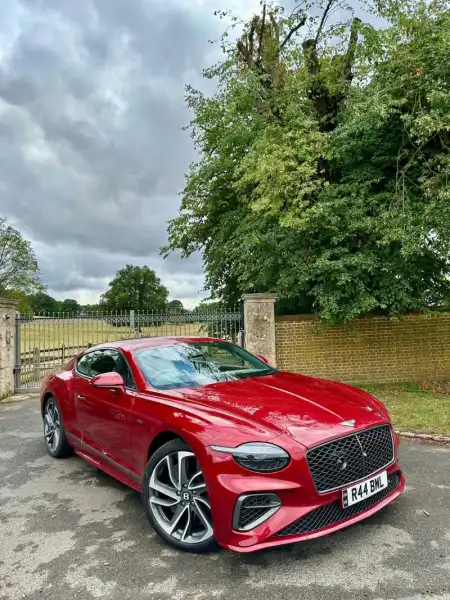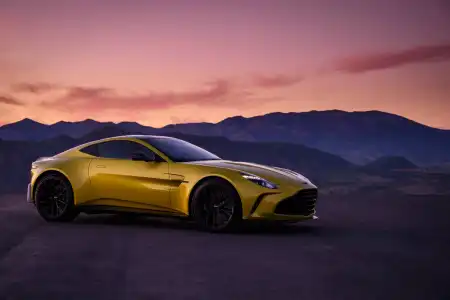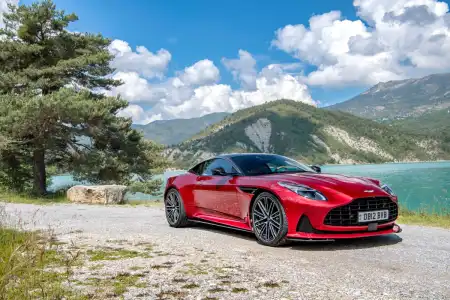- Savage performance
- Very tidy handling
- Surprisingly roomy for a supercar
- It looks a tad similar to its predecessor
- Ferrari’s 296 GTB is arguably capable of more trickery
- The navigation system is a little fiddly
Introduction
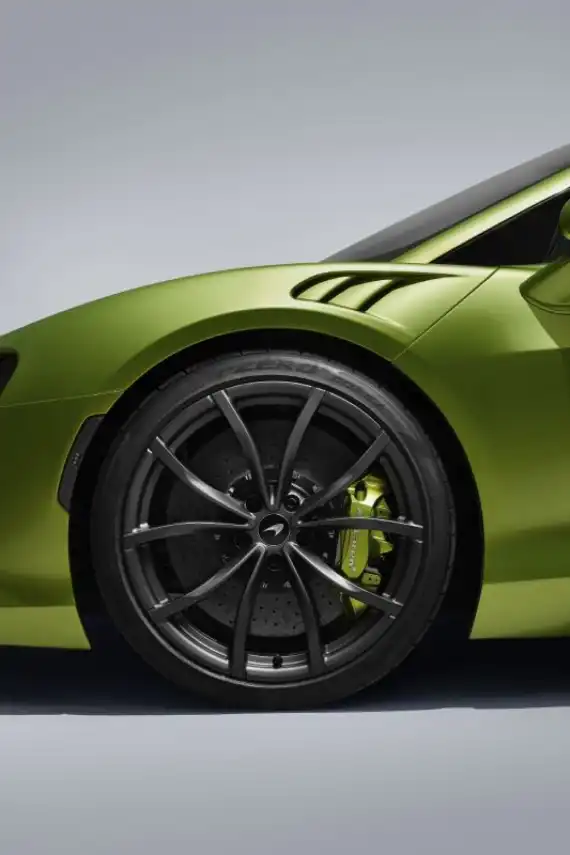
The day had to come when hybrid power made its way into supercars - although you'd be forgiven for not realising that McLaren already has over a decade of experience in that field.
Its P1 hypercar - considered a natural successor to the 90s masterpiece, the McLaren F1 - was one of the first plug-in hybrid sportscars on the market.
The Artura has since taken over the electrification mantle, boasting a 3.0-litre V6 petrol engine and an electric motor, unlike its purely fossil-fuelled predecessor, the 570S, which continued the English outfit’s tradition of using 4.0-litre V8 lumps.
To mark the launch of the new convertible Spider version, the coupe we're testing has received a modest upgrade.
The Artura's engine, which produced 585PS, has been uprated to 605PS. When combined with the electric motor, the total system output now rises from 680 to 700PS, which isn't too shabby.
An eight-speed dual-clutch automatic transmission compliments the powertrain.
As for customisable options, there are no trim levels, as such – you simply choose from an endless array of possibilities and McLaren goes away and builds your car.
Nevertheless, the standard kit includes 19-inch front and 20-inch rear alloys with Pirelli P-Zero tyres, carbon ceramic brakes, automatic full LED headlights, heated door mirrors, and a power-adjustable steering column. You also get dual-zone climate control, an eight-inch infotainment touchscreen with wired Apple CarPlay and Android Auto, a digital radio, navigation, and Alcantara Clubsport seats – along with a leather steering wheel.
A 'Practicality Pack' with power-folding door mirrors, fore and aft parking sensors, a rear-view camera and soft-close doors can be added at no extra cost.

You would be forgiven for mistaking the Artura for a 570S - it looks quite similar. However, McLaren has confirmed that every panel is new, and despite the resemblance, this is a clean-sheet design.
There is not much of a grille, with the low bonnet taking centre stage instead, although the aggressive front splitter and various air-intake cutouts give the supercar a menacing presence.
Around the side, there is a large air intake behind the doors, while the rear is covered in a mesh, enabling you to peer into its mid-engined inners, with two high-up exhaust tips towards the middle.
As has been the case on plenty of McLarens, the dihedral 'scissor' doors look incredible when raised.
Inside, you might be taken aback by how minimalistic the Artura is - but then, McLaren has tended to aim for few, if any, distractions in the cockpit.
For example, you won’t find a single button, switch or dial on the steering wheel, which, judging by its three dual-spoke carbon fibre and flat-bottomed design, is there for the sole purpose of you using it to drive as precisely (and quickly) as possible.
A large hood is positioned on top of the steering column. It contains the digital driver's display, which offers configurable layouts.
To the left of the wheel is the eight-inch infotainment touchscreen, which is positioned in portrait orientation on a sturdy bracket in front of the dashboard.
The system is much improved compared with McLaren's previous offerings. It sports a clear, responsive display and a reasonably intuitive menu layout.
The navigation system is a little fiddly. Still, it’s vastly superior to earlier McLaren designs.
There is little else to it besides the conventional indicator stalks, gearshift paddles and a handful of buttons on the centre console – but that's all by design.
McLarens are all about driving – not the intrusion of luxuries or creature comforts.
Nevertheless, the comparatively bare interior shouldn't be mistaken for sub-par - the build quality is good, and everything feels as expensive as expected.
On The Road
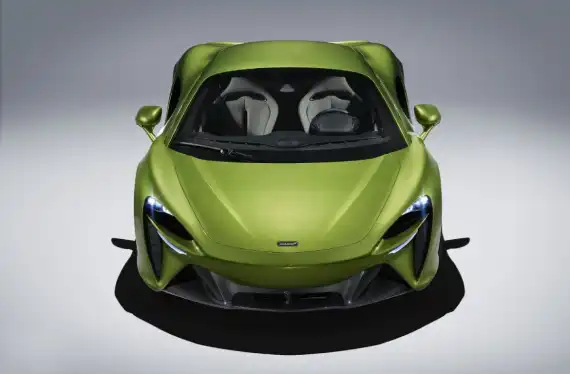
Handling & Performance
The Artura can go from 0 to 62mph in 3.0 seconds flat, helped by an instant burst of torque (720Nm, to be precise) from the electric motor when you move off the line.
That said, the Artura is built with civility and usability in mind. Its default start-up mode is all-electric, enabling early risers to move out of the garage without waking the entire street.
Once the engine revs, it sounds delightful and roars off like a caged lion to a (limited) top speed of 205mph.
There is a lot of performance available at all stages of the rev range, and overtaking is a joy and a piece of cake.
Supercars are supposed to be light in terms of cornering ability. Still, adding an electric motor and batteries inevitably means McLaren has battled hard to keep the bulkiness down.
It is 2kg short of 1.5 tonnes, which makes it the lightest in its class. This is helped by feeding the Artura a strict diet of carbon fibre, which McLaren reckons has helped shave something in the region of 100kg off the equivalent aluminium chassis.
That means a power-to-weight ratio of 488PS per tonne (measured against its ‘dry weight’ of 1,395kg).
The result is that the Artura is supremely agile. It corners exceptionally well, thanks to a new multi-link rear suspension, variable dampers, and superbly responsive steering.
The steering wheel provides a lot of feedback, so you can really get a sense of how close you are to the limit.
The McLaren holds its own around a bend, quite literally, with excellent stability and minimal body roll.
Another aspect that is also incredibly notable is the ride comfort - something supercars are, somewhat obviously, not traditionally renowned for.
Thanks to the adaptive dampers, the Artura's Comfort mode produces a ride quality that rivals that of a normal family car.
Track mode really dials things up and was too excessive to use on the public road, while Sport provides a happy medium between the two and appears well suited to the Artura's characteristics.
The carbon ceramic brakes make stopping almost as much fun as accelerating, while the road and wind noise is well dampened out so you can enjoy the sound of the impressive, if different, V6 powertrain.
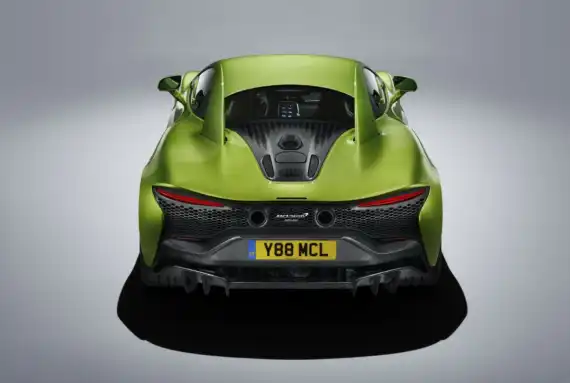
Space & Practicality
Space isn't a strong point of many supercars, but like the Artura's level of ride comfort, it can surprise you.
Of course, it is only a two-seater, but there's plenty of room inside. Therefore, even taller adults won’t struggle to fit into the car, aided by the amount of space created by the ‘scissor’ doors, which open upwards, creating a large gap.
Visibility out of the front is excellent, too, as the pillars are kept as thin as possible, although the rear pillars restrict your view from looking diagonally behind you.
You will also find several spaces to keep your belongings, including generously sized door bins. And, for a supercar, the amount of room in the boot (well, underneath the bonnet) is pretty reasonable at 160 litres, slightly more than you got in the 570S.
There is also a tiny cubby in the centre console.
Ownership
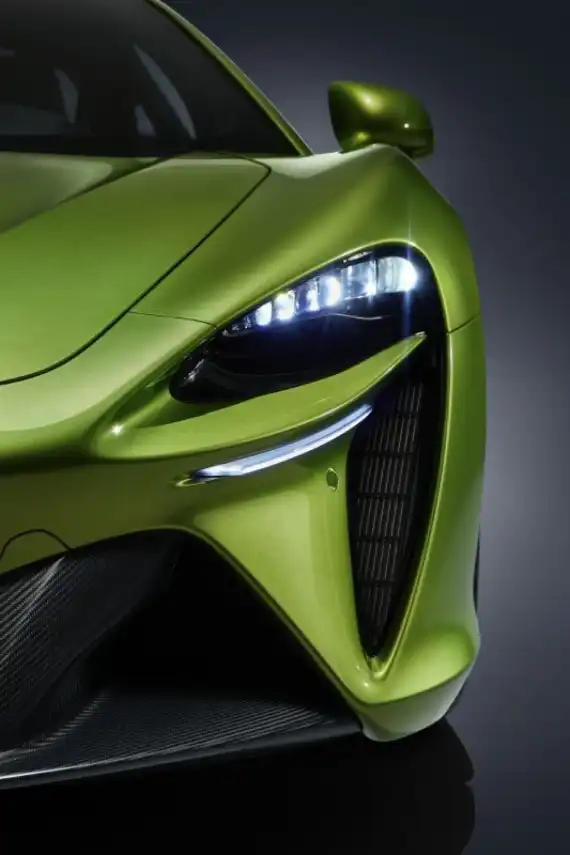
Running Costs
The McLaren Artura will do an impressive 58.8mpg, while CO2 emissions are 108g/km.
Neither figure is impressive for a typical plug-in hybrid. But for a supercar, on the other hand? It is still astonishing to look at such statistics, even over a decade after launching McLaren's first PHEV, the P1.
Of course, getting anywhere near those numbers depends on you keeping the 7.4kWh battery topped up.
It takes around two and a half hours to get a 0-80% charge, meaning it's not much slower if you plug it into a standard three-pin mains socket like any other electrical appliance in your house, instead of investing in a 7kW home wall box.
Officially, the Artura can run off the electric motor alone for 19 miles (and up to 81mph).
McLarens have been steadily growing in reliability, with the Artura's predecessor, the 570S, earning a decent reputation for dependability.
Moreover, McLaren has broken with supercar tradition by offering a generous five-year warranty, limited to 60,000 miles, while a separate six-year guarantee covers the PHEV's battery.
Even more remarkably, you also get three years' servicing included at no extra charge - intervals are every year or 9,000 miles.
Verdict
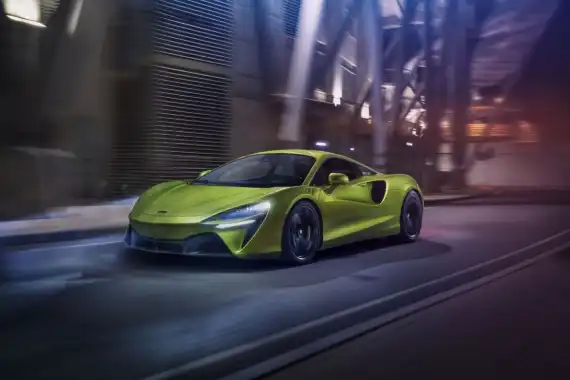
Overall, the McLaren Artura is hugely impressive.
With a distraction-free interior, the focus is all on the driving – and the hybrid delivers ferocious acceleration and excellent handling while being comfortable and (for a supercar) economical at the same time.
Admittedly, Italy’s Ferrari 296 GTB might be capable of more trickery compared with the Artura's more sensible demeanour. But so what? McLaren has worked wonders with the Artura, which is another excellent car to add to its still very young British collection.

